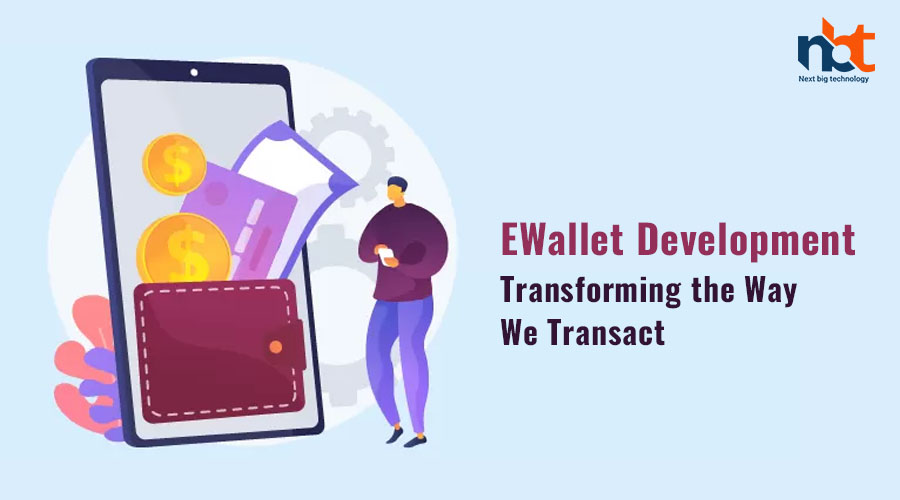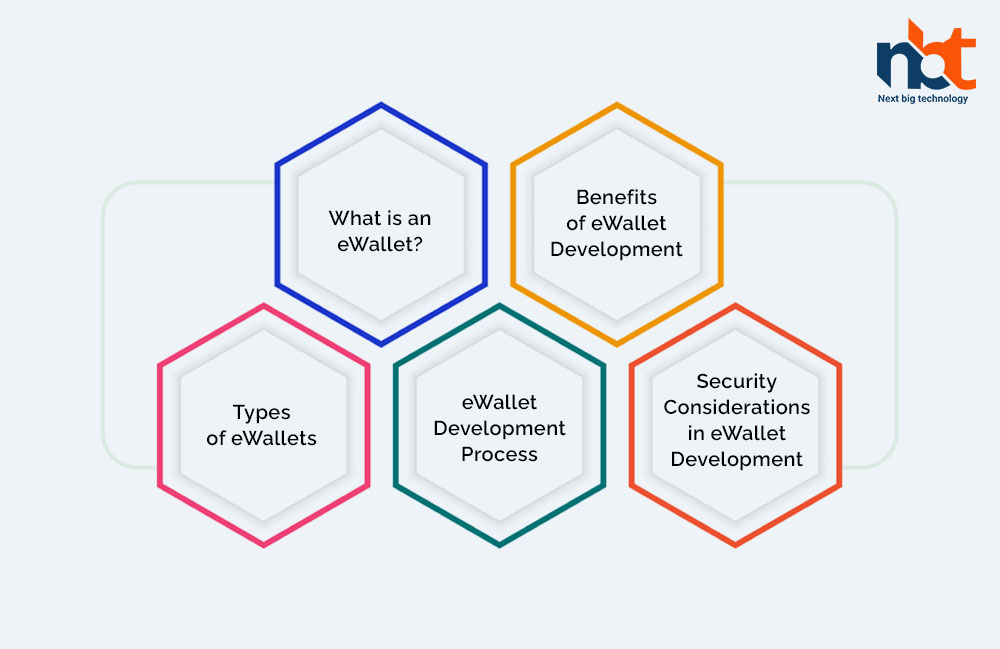Table of Contents
Introduction
In an era of digital transformation, financial technology has revolutionized the way we conduct transactions. One such innovation is the electronic wallet, commonly known as an eWallet. An eWallet is a digital payment system that allows users to store, manage, and transact funds electronically using a mobile device or computer.
In this blog post, we will explore the world of eWallet development, diving into its features, benefits, security measures, and the impact it has on the financial landscape. Whether you’re a business owner considering integrating an eWallet into your operations or an individual curious about the convenience and security of digital payments, understanding eWallet development is essential in this evolving digital age.
-
What is an eWallet?
An eWallet, also known as a digital wallet or mobile wallet, is a software application that enables users to store, manage, and transact funds electronically. It serves as a virtual container for payment card information, bank account details, and other forms of digital currency.
eWallets facilitate various types of transactions, including online purchases, peer-to-peer transfers, bill payments, and contactless payments at physical retail stores. They offer a convenient and secure alternative to traditional cash-based transactions, allowing users to make payments anytime, anywhere, with just a few taps on their mobile devices.
-
Benefits of eWallet Development
2.1. Convenience and Accessibility
eWallets offer unparalleled convenience, allowing users to make payments quickly and easily using their mobile devices. They eliminate the need to carry physical cash or credit cards, reducing the risk of loss or theft. eWallets are accessible 24/7, enabling transactions at any time, making them ideal for online shopping, bill payments, and person-to-person transfers.
2.2. Enhanced Security Measures
eWallets incorporate robust security features to protect users’ financial information. These include encryption, tokenization, biometric authentication (such as fingerprint or facial recognition), and two-factor authentication. With these security measures in place, eWallets provide a secure and safe platform for digital transactions.
2.3. Seamless Integration with Other Services
eWallets can be seamlessly integrated with various services and applications, such as loyalty programs, coupon codes, and ticketing systems. This integration enhances the user experience by providing a centralized platform for managing multiple activities, thereby streamlining transactions and increasing customer engagement.
2.4. Cost-Effectiveness
Using eWallets can result in cost savings for both businesses and consumers. Businesses can reduce transaction fees associated with credit card processing, while consumers can benefit from discounts, cashback offers, and rewards provided by eWallet service providers. Additionally, eWallets reduce the need for physical infrastructure, such as point-of-sale terminals, resulting in cost savings for businesses.
2.5. Financial Inclusion
eWallets have the potential to increase financial inclusion by providing access to digital payment services for individuals who may not have access to traditional banking services. eWallets offer a low-cost alternative for conducting financial transactions, enabling the unbanked and underbanked population to participate in the digital economy.
-
Types of eWallets
3.1. Closed eWallets
Closed eWallets are specific to a particular merchant or service provider. They are typically used for transactions within a specific ecosystem, such as e-commerce websites or digital service providers. Closed eWallets offer convenience and loyalty rewards to users within that particular network.
3.2. Semi-closed eWallets
Semi-closed eWallets allow users to make transactions with multiple merchants or service providers. These eWallets can be topped up with funds from various sources, such as bank accounts or credit cards, and can be used for a wide range of transactions, including online and offline purchases, bill payments, and peer-to-peer transfers.
3.3. Open eWallets
Open eWallets provide the highest level of flexibility, allowing users to make transactions with any merchant that accepts digital payments. These eWallets are typically linked to a user’s bank account and can facilitate various types of transactions, including retail purchases, utility bill payments, and person-to-person transfers.
-
eWallet Development Process
4.1. Requirement Gathering and Analysis
The first step in eWallet development is understanding the business requirements and target audience. This involves identifying the desired features, security measures, integration possibilities, and scalability requirements of the eWallet.
4.2. User Interface and User Experience Design
Designing an intuitive and user-friendly interface is crucial for eWallet development. The user interface should provide easy navigation, clear transactional flows, and a visually appealing design. User experience considerations should prioritize simplicity, speed, and accessibility.
4.3. Backend Development and Integration
The backend development of an eWallet involves building the server-side infrastructure, integrating payment gateways, and establishing secure connections with financial institutions. It includes features such as user authentication, transaction processing, data encryption, and integration with external APIs and services.
4.4. Mobile App Development
For mobile-centric eWallets, the development of native mobile applications is essential. This involves coding the frontend components of the app, implementing mobile-specific features, ensuring cross-platform compatibility, and optimizing performance for various devices and operating systems.
4.5. Testing, Deployment, and Maintenance
Thorough testing is crucial to ensure the functionality, security, and usability of the eWallet. Rigorous testing should cover aspects such as payment processing, security vulnerabilities, performance, and compatibility. Once tested and approved, the eWallet can be deployed to the intended platforms. Ongoing maintenance and updates are essential to keep the eWallet secure, compatible with evolving technologies, and free from bugs.
-
Security Considerations in eWallet Development
Security is paramount in eWallet development to protect sensitive financial information. Some key security considerations include:
5.1. Encryption:
All sensitive data, including transaction details and personal information, should be encrypted to prevent unauthorized access.
5.2. Secure Authentication:
Implementing strong authentication methods, such as biometric authentication and two-factor authentication, enhances security and prevents unauthorized access to eWallet accounts.
5.3. Tokenization:
Tokenization replaces sensitive data with unique tokens, reducing the risk of data breaches and protecting users’ financial information.
5.4. Compliance with Regulatory Standards:
eWallets must comply with relevant data protection and financial regulations to ensure the privacy and security of users’ personal and financial information.
5.5. Regular Security Audits:
Conducting regular security audits and vulnerability assessments helps identify and address potential security loopholes.
Conclusion
eWallet development has transformed the way we transact, offering convenience, security, and accessibility. Its benefits include cost-effectiveness, seamless integration with services, and increased financial inclusion.
Understanding the types of eWallets, the development process, and the security considerations involved empowers businesses and individuals to embrace the digital payment revolution. By leveraging the power of eWallets, businesses can enhance customer experiences, streamline transactions, and tap into new market segments.
As the world continues to move towards a cashless society, eWallets are poised to play a pivotal role in shaping the future of financial transactions. Embrace the potential of eWallet development, and join the digital revolution that is redefining the way we transact and interact with financial services.


















